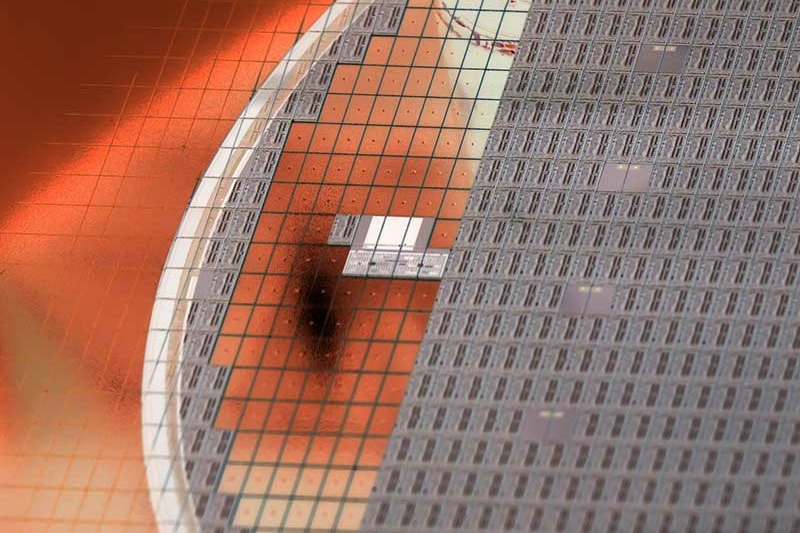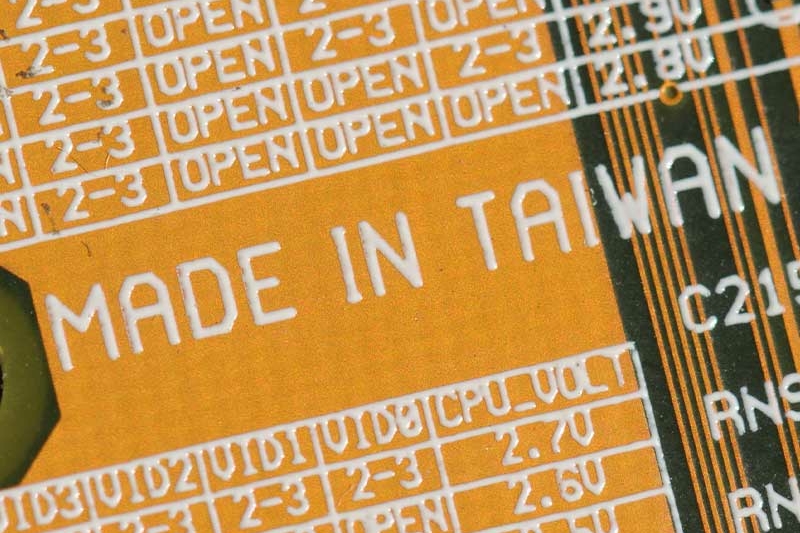Europe again has the technology sector in its target zone
Guidance for Taiwanese companies

2020 witnesses a year filled with significant changes to all of our professional and personal lives.
Businesses and individuals worldwide are witnessing significant geopolitical fractures that have resulted in significant changes to various aspects of the global legal landscape, such as financing, trade, sanctions, foreign direct investment (FDI), intellectual property and antitrust. The COVID-19 pandemic has also negatively affected many aspects of deal-making, with general corporate finance transactional activity levels significantly lower than last year. On the other hand, distressed M&A, restructuring and financing activities are on the upswing, as is the case for investments in sectors that are primed to take center stage in a post-COVID-19 world.
Taiwanese companies and financial institutions are not immune to these global developments. Indeed, Taiwan's unique positioning in the global supply chain and other areas warrants special attention to some of these issues faced by other players globally.
While the COVID-19 pandemic has prevented us from seeing clients in person in Taiwan this year, we continue to focus on the latest legal issues and trends affecting our Taiwanese clients and other contacts globally. Through a series of webinar presentations and online meetings, our objective this year is to deliver to you updates on the following key topics of interest:
We hope this report and our recent webinars are helpful in navigating a swiftly changing landscape.
Guidance for Taiwanese companies

What Quanta Storage and Qualcomm mean for Taiwan's businesses

By Farhad Jalinous and Tilman Kuhn
Already burgeoning, foreign direct investment regulations worldwide are bulking up still more in response to emerging threats

A protective strategy includes understanding new US rules, identifying the risk factors and taking proactive steps to prevent problems

By Bijal Vakil and Henry Huang
Successful defense strategies for Taiwanese businesses

By Alexander McMyn and Eugene Man
What next for Taiwanese banks and businesses?

By Steven Sha and Daniel Yeh
What they mean for investors in the region


A protective strategy includes understanding new US rules, identifying the risk factors and taking proactive steps to prevent problems
The current de-coupling trend between the US and the People's Republic of China (PRC) is creating opportunities for Taiwanese exporters, while also raising significant risks for companies caught in the middle.
Just months away from a US presidential election and more than two years into an unprecedented US-PRC trade dispute, there is a troubling trend toward "de-coupling" the world's two largest economies, making them less interdependent in sensitive areas. Growing bilateral trade tensions have called into question the reliability of sole-source supply arrangements. These issues and others, such as rising costs in the PRC, have been a factor in global companies' decisions to diversify their supply chains by moving some or all production out of the PRC.
Many businesses, including PRC companies, have relocated manufacturing operations from the PRC to other Asia-Pacific countries, primarily Taiwan and members of the Association of Southeast Asian Nations (ASEAN) region. Some businesses have relocated in the belief that obtaining a certificate of origin for their finished goods from a third country such as Taiwan will keep them safe. But US regulatory scrutiny of imports containing parts made in the PRC has never been higher, and a certificate of origin alone will not satisfy US customs authorities predisposed to doubt the certificate's authenticity.
Shipping finished goods to the US that contain non-Taiwan-origin parts, particularly PRC-made parts, entails significant and growing risks. A wise strategy includes proactively understanding these risks, assessing potential exposure and taking action to protect access to US markets.
Under emerging US trade regulations, Taiwanese exporters—and the US importers they work with—may be accused of trying to evade duties on PRC-made finished goods or parts if they ship Taiwanese goods containing parts from the PRC or other countries that would be subject to higher duties if they were imported directly into the US. The penalties can be harsh, including high, previously unanticipated duties, blocked or limited access to US markets and, in some cases, other civil or even criminal charges.
Importantly, these risks also apply to Taiwan's increasing investment in ASEAN countries, where exports by Taiwan-owned facilities to the US could also encounter such risks.
These trade regulations include:
Country of origin (CoO) inquiry or penalty action by US Customs and Border Protection (CBP) – When goods arrive at a US port for importation or "entry," CBP may investigate the accuracy of the CoO declarations that the goods originated in Taiwan.
In particular, CBP may check whether the production or assembly processes in Taiwan "substantially transformed" the PRC-made parts enough for the finished goods to have originated in Taiwan for purposes of duties that both depend on CoO. Complex and sometimes inconsistent "substantial transformation" rules and precedents guide CBP's inquiry. If applicable legal authorities do not support the importer's CoO claim, CBP may demand underpaid duties, assess significant penalties and, in some instances, detain, exclude or seize the goods.
Scope inquiry by US Department of Commerce (DOC) – DOC may conduct its own CoO assessment, using its own rules, if PRC-made parts in Taiwanese goods are subject to anti-dumping (AD) and countervailing duty (CVD) actions or if the finished product would be subject to AD/CVD duties if the CoO were the PRC.
DOC's rules for assessing "substantial transformation" differ from those of CBP. So, even if a CoO is correct for CBP purposes, DOC could still issue a conflicting determination and rule—sometimes even retroactively—that the finished goods from Taiwan are subject to PRC AD/CVD duties.
Anti-circumvention inquiry by DOC – Even if both CBP's and DOC's CoO rules deem specific goods as having originated in Taiwan, DOC can inquire whether the goods otherwise "circumvent" US AD/CVD duties.
If it determines the Taiwan operations were minor and/or would otherwise defeat the purpose of those duties in the future, DOC may enter an adverse finding. AD/CVD duties will then apply, beginning on the date that DOC initiated its inquiry. In the future, as explained below, such duties might affect earlier entries as well.
Anti-evasion inquiry by CBP – Under the US Enforce and Protect Act (EAPA), CBP may investigate whether Taiwanese goods are "evading" AD/CVD duties through false or omitted statements to CBP.
In most EAPA cases, CBP initially checks only whether the goods were actually produced in Taiwan, not merely transshipped through Taiwan via false CoO labeling. Although most EAPA allegations thus far have focused on CoO alone, claimed irregularities in classification and valuation could also support an allegation of duty evasion. However, even before deciding whether an importer made false statements, CBP may demand AD/CVD cash deposits on entries made during the investigated period. These cash deposits and the burden of responding accurately and fully to CBP's requests for information can substantially disrupt the normal course of business.
According to CBP's annual Trade and Travel Report for 2019, CBP received 38 new EAPA allegations in fiscal year 2019 alone, initiated 36 EAPA investigations as a result, imposed trade-disrupting interim measures in 31 cases, and conducted 21 onsite audits of producers in Asia-Pacific (Thailand, Vietnam, Malaysia and the Philippines).1
Recent proposals for harsher rules – In August 2020, DOC announced a proposal to toughen these measures even further. If implemented, the proposal would authorize DOC and CBP to impose punitive AD or CVD tariffs retroactively on goods deemed "evading" or "circumventing" under any of the inconsistent standards. A CBP suspension of liquidation based on a transshipment allegation—even if evidence later disproved it—could nevertheless result in duties based on a subsequent circumvention finding. Indeed, an adverse DOC determination based on any later "scope," "circumvention" or "covered merchandise" inquiry could potentially claw back years of imports made before DOC initiated its inquiry. This could prove ruinous to importers.
Finally, proponents of de-coupling also have proposed expanding EAPA to include imports subject to duties other than AD/CVD tariffs, such as Section 301 tariffs under which most of the "trade war" duties were imposed in the past several years. In July 2019, for example, CBP told reporters that the agency wants Congress to amend EAPA by expanding its scope to cover all alleged "duty evasion" (including in Section 301 and Section 232 matters).2 This could have enormous liability consequences for importers and exporters of covered products.
If goods you produce contain significant parts made outside of Taiwan, US authorities may investigate whether the finished goods "originate" in Taiwan or should be subject to duty treatment based on the country where the parts were made.
To manage these significant risks, start by understanding your company's exposure. This includes assessing:
Depending on your circumstances, consider taking some or all of the following protective actions:
Obtain a CBP CoO ruling if existing precedent might be distinguishable or unclear –This generally takes approximately one month and prospectively binds CBP on the facts presented, but is also public. The requesting party can persuade CBP to redact certain proprietary information, but the public version's online publication is unavoidable.
Keep adequate records – Your production, accounting and shipping recordkeeping systems should enable you to trace particular exports of finished goods through production or assembly from the parts and components purchased, including those obtained from unrelated suppliers, which may have obtained their inputs from the PRC or a third country subject to higher duties. It is advisable to involve expert consultants for this exercise.
Request a DOC advisory opinion – Asking DOC to apply its own CoO rules for purposes of AD/CVD can give some assurances of DOC's likely views. This may be especially useful when your inputs would be subject to AD/CVD if shipped directly to the US, your finished goods would be subject to AD/CVD if they originated in the PRC under the DOC's applicable CoO rules or US domestic industries might claim that your goods are circumventing US duties. Seeking DOC's likely views can involve complex factual and legal issues, again making consultation with knowledgeable analysts advisable, in particular because the new rules may limit an exporter/importer's right to request such an opinion.
Conduct EAPA due diligence – This can include assessing the sensitivity of the exports, recent trade patterns and the nature of your operations and recordkeeping in the context of evolving CBP precedents, especially as EAPA investigations involving duty evasion allegations against assemblers throughout Asia-Pacific have increased significantly. An alleger must satisfy only a very low burden of proof—"reasonably supported" and "reasonable suspicion," respectively—before CBP must initiate an EAPA investigation and impose onerous EAPA interim measures.
Adjust your export or assembly operations – If other measures do not sufficiently address your risks, then make appropriate changes to your production arrangements, including enhanced or more extensive production operations and/or changes to how you source inputs.
No matter how current US-PRC negotiations unfold, the bilateral trade relationship will probably remain volatile, at least in the short-term, with US regulators continuing to scrutinize goods containing PRC-made parts. Both major US political parties have now taken a "tough on trade" posture with respect to the PRC. Regardless of who wins the presidential election in November 2020, there is unlikely to be a meaningful near-term de-escalation.
Prudent exporters must therefore plan for continued de-coupling and take thoughtful, proactive steps to protect their US market share.
1 https://www.cbp.gov/sites/default/files/assets/documents/2020-Jan/CBP%20FY2019%20Trade%20and%20Travel%20Report.pdf.
2 https://www.quickcalleronline.com/roundup-of-developments-at-the-cbp-trade-symposium/.
This publication is provided for your convenience and does not constitute legal advice. This publication is protected by copyright.
© 2020 White & Case LLP